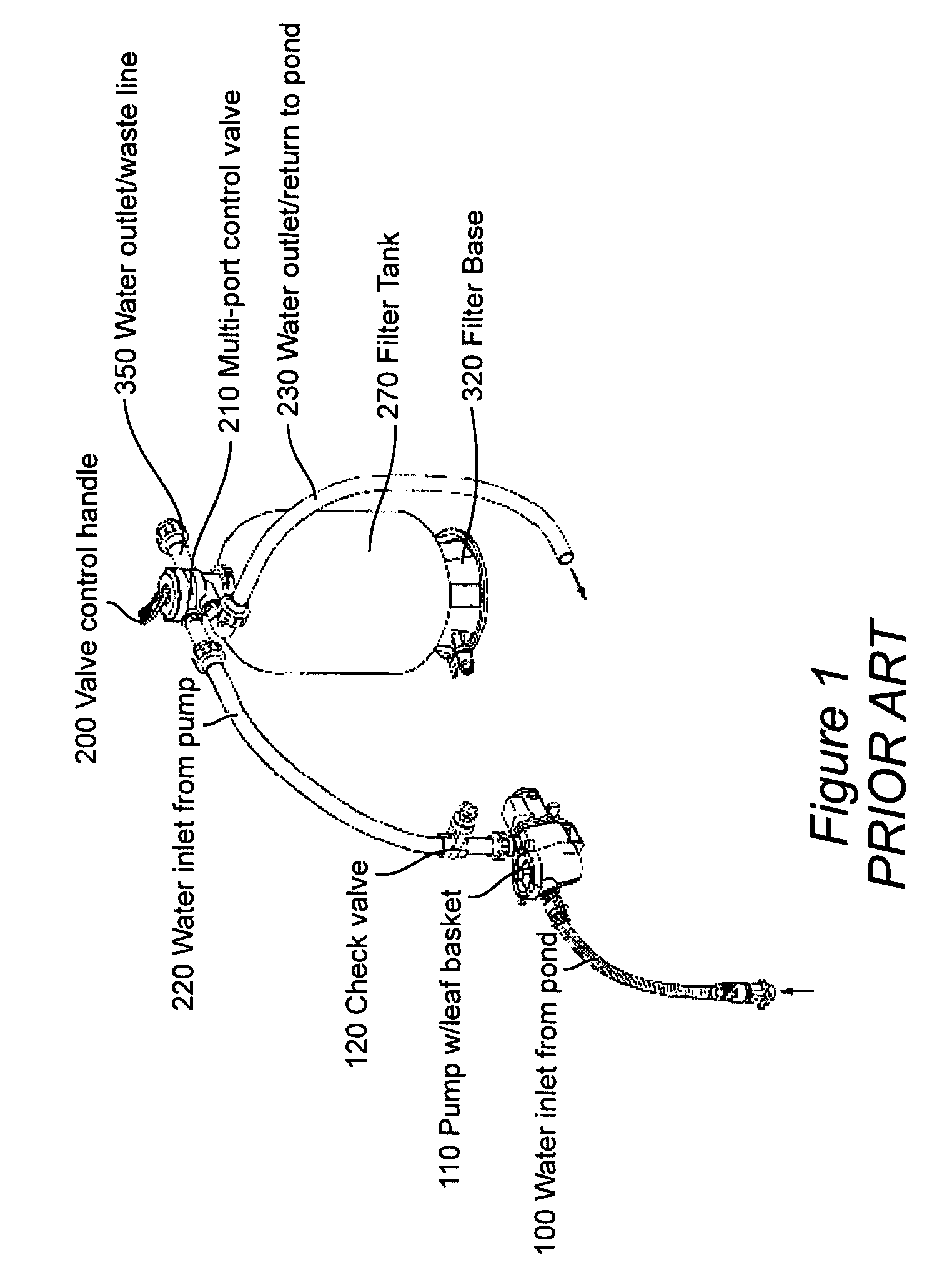See-thru self cleaning biological filter system for aqua-culture
a biological filter and aqua-culture technology, applied in biological water/sewage treatment, filtration separation, separation processes, etc., can solve the problems of consuming oxygen, consuming oxygen, consuming even more oxygen from the water, water will not stay clear, etc., to achieve rapid removal and unrestricted water flow
- Summary
- Abstract
- Description
- Claims
- Application Information
AI Technical Summary
Benefits of technology
Problems solved by technology
Method used
Image
Examples
Embodiment Construction
[0063] Referring now to the drawings, and more particularly to FIG. 1, there is shown an overview of a pond water filtration system. Water comes into the system from the pond through a water inlet 100, pulled by a pump 110 having a leaf basket for removing leaves. A check valve 120 prevents backflow from the filtration system. Water inlet 220 channels the pond water into the filter tank 270 via a multi-port control valve 210 controlled by valve control handle 200. The filter tank is mounted on a filter base 320. Filtered water is returned to the pond through water outlet 230. Waste is discharged through water outlet 350.
[0064] The purpose of this invention is to provide pond owners with an improved new water filtering system that is simple and easy to use, gives a maximum mechanical and biological filtration with significantly improved biological filter material, uses a see thru filter tank for monitoring the need for cleaning of the biological filtration material, has a new design...
PUM
| Property | Measurement | Unit |
|---|---|---|
| length | aaaaa | aaaaa |
| length | aaaaa | aaaaa |
| length | aaaaa | aaaaa |
Abstract
Description
Claims
Application Information
 Login to View More
Login to View More - R&D
- Intellectual Property
- Life Sciences
- Materials
- Tech Scout
- Unparalleled Data Quality
- Higher Quality Content
- 60% Fewer Hallucinations
Browse by: Latest US Patents, China's latest patents, Technical Efficacy Thesaurus, Application Domain, Technology Topic, Popular Technical Reports.
© 2025 PatSnap. All rights reserved.Legal|Privacy policy|Modern Slavery Act Transparency Statement|Sitemap|About US| Contact US: help@patsnap.com



